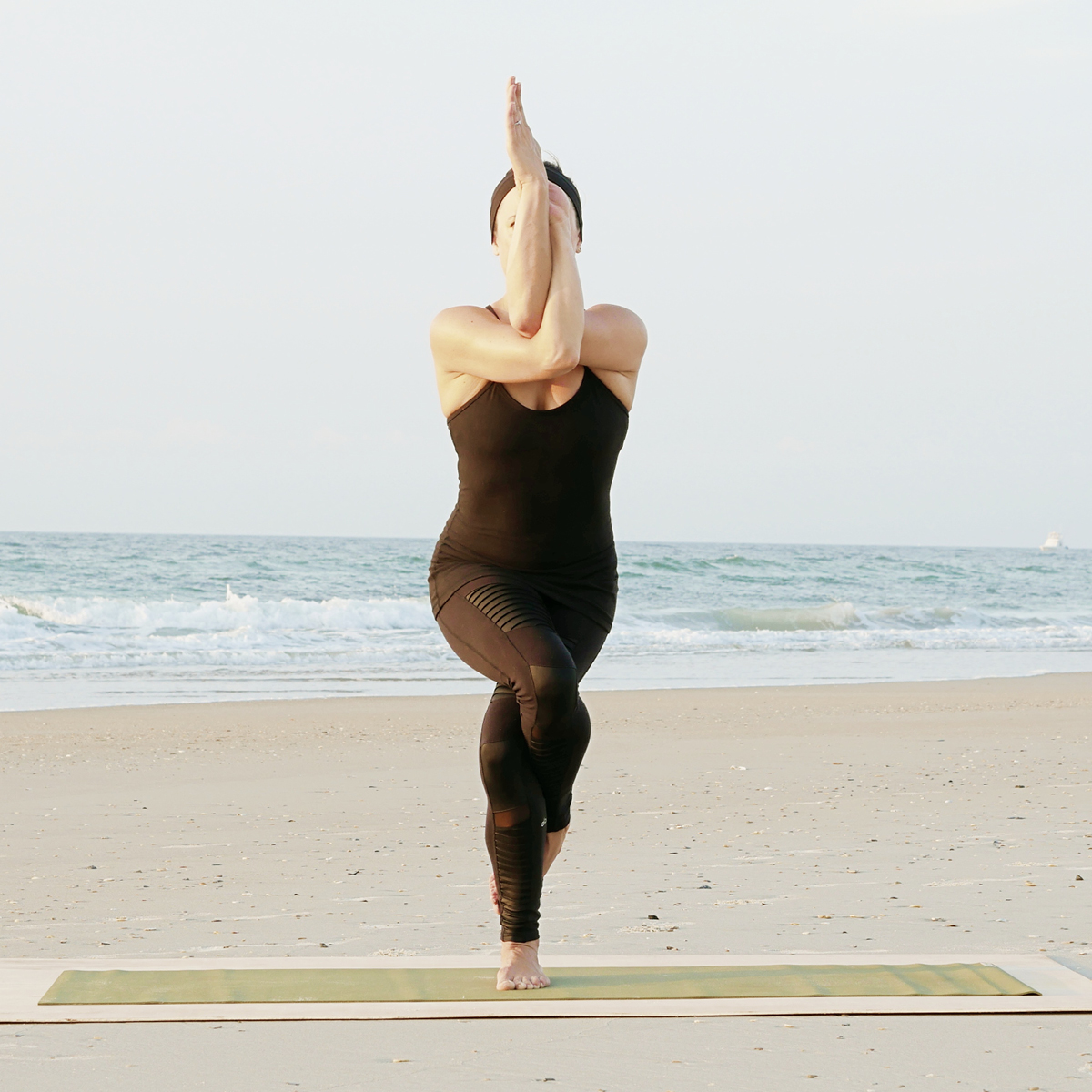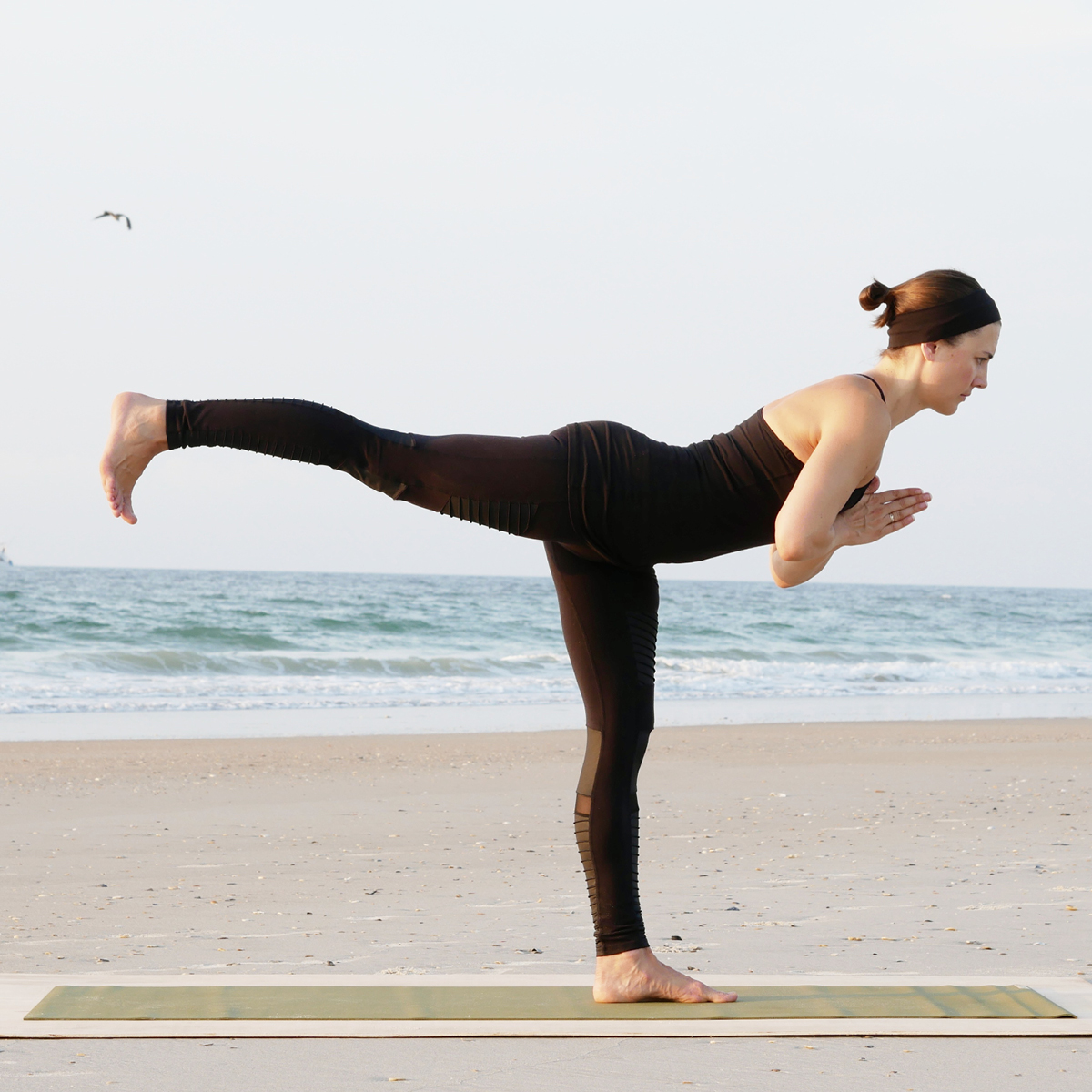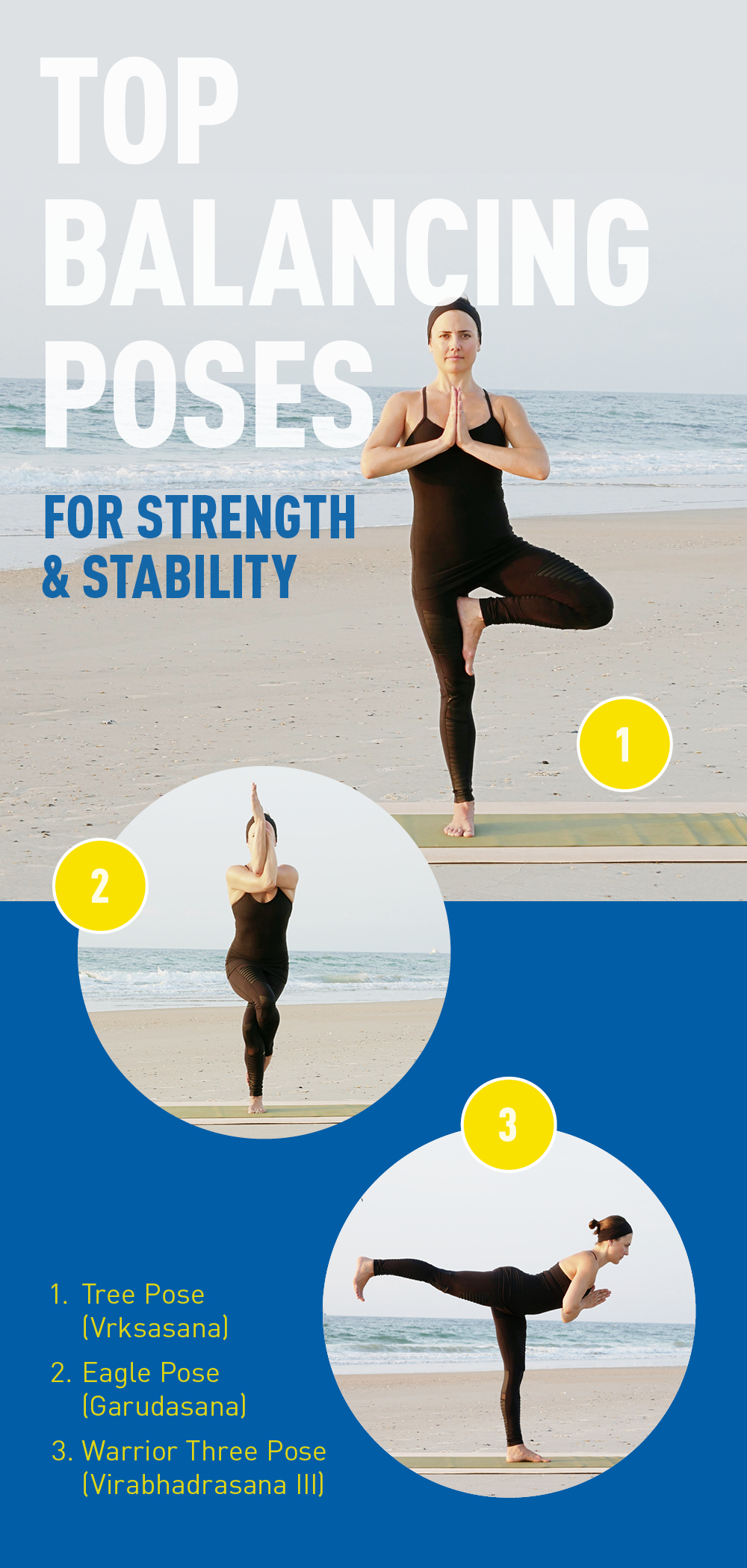Expert Advice
Acella Pharmaceuticals is partnering with Lexi Hawks, a E-RYT 500 Hr Yoga Alliance Certified Teacher, to bring greater awareness to the importance of thyroid care and education. This post was sponsored by Acella Pharmaceuticals.
Disclaimer: The information provided is for educational purposes only and does not substitute professional medical advice. Consult a medical professional or healthcare provider before beginning any exercise, fitness, diet, or nutrition routine. Acella Pharmaceuticals does not endorse, promote or sponsor any products or brands mentioned in this article. The views expressed here are those of the author.
Before I started practicing yoga, I would describe my life as a series of events that my mind would judge as good or bad. I spent a lot of time trying to get more of some things and less of other things. In a way, it seemed as though I was on a pendulum, and throughout the day, I was on a wild ride, swinging from one end to the other. I felt unsettled, scattered, and most certainly stressed. The ups and downs of "managing" (can we call it that?) life left me drained, tired, and not the kind of healthy I yearned for.
Once I started practicing yoga, the effects were almost immediate. After doing yoga postures, breathing techniques and short meditations, there was a new sense of calm. The pendulum was swinging a little slower, and a little slower, and a little slower. There have even been moments where I’ve experienced the pause in the middle – I started to feel rested, energized and stable. From my personal experiences with yoga and from teaching others yoga for more than 15 years, I can confidently say that yoga helps bring the mind and body into alignment, leaving one better able to meet challenges with strength and grace.
Intrigued? Here are three yoga poses to help you slow down the pendulum, build strength and perhaps pause in a moment of harmony. Give it a go, and let us know what you think in the comments below.
1. Tree Pose/Vrksasana
From a standing position with the feet parallel and hands on the hips, turn the left leg out to the left (external rotation through the left hip joint) and place the left heel on the right inner ankle bone. Keep the ball of the left foot on the ground. Press the heel and the inner ankle bone together and allow this motion to center the body weight and to engage the leg muscles by lifting the muscles upward. Keep the hips balanced.
If your balance feels stable here, challenge yourself by drawing the left sole of the foot onto the inner right calf. Press the sole of the foot firmly to the inner right calf.
If your balance still feels solid, further challenge yourself by drawing the sole of the left foot above the right knee. Reach down with the left hand and grab the left ankle. Draw the foot high and place the left heel on the upper right thigh, just below the groin. Press the sole of the left foot firmly to the thigh muscle and counter press the thigh back into the sole of the foot. Be sure to ground and root firmly through the standing leg’s heel.
If your balance feels challenged, place the hands on the back of chair or on a wall for support. If your balance feels solid, try pressing the palms together at the center of the chest. If you feel well-balanced, take the arms overhead. Let the breath remain full in this pose. If you lose balance and fall out of the pose or jump around, try to keep a sense of humor. Laughter will bring joy to the journey.
Repeat this pose on the other leg.

2. Eagle Pose/Garudasana
From a standing position, step legs together and bend the ankles, knees and hips as if sitting down into a chair. Lift the right leg high and cross it over the left thigh. Stack the knees in one line. Open the arms to the sides, then cross them over each other, left over right, bending both elbows and lifting the forearms toward the sky with both palms pressed together.
Gently squeeze the inner line of the legs and draw more weight onto the heel. If possible, wrap the right foot around the left calf (or modify the wrapping of the leg by placing the right toes on a yoga block next to the left foot.
Firmly squeeze the knees and elbows together, keeping joints stacked. Release into gravity and deepen the bend in the standing leg. Keep the elbows at shoulder height and drop the shoulders away from the ears.
To exit the pose safely, uncross the right leg and step it down to come back into a standing pose.
If your balance feels challenged, place the hands on the back of a chair or on a wall for support. You can also try doing just the legs first (without the arms) and take the arms second (without the legs). If your balance feels solid, try both together.
Repeat on the opposite side.

Warrior Three Pose/Virabhadrasana III
From a standing position, place the left foot back about 3 feet, hip distance apart, and bring the palms to touch at the center of the chest. Bend the right knee and lean the upper body forward toward the front thigh. Shift the weight into the right leg and lift the back leg, keeping the hands at heart-center. Straighten both legs firmly and flex the back foot to extend energy through the heel. Be sure both hips are in the same plane and “squared” to the mat. See that the hip, knee and toes of the lifted back leg face the ground.
To exit the pose safely, bend the right knee and step back to a lunge. From there, step forward and return to a standing pose.
If your balance feels challenged, place the hands on yoga blocks on the highest setting on the floor or try placing the hands on the back of a chair for support. If your balance feels solid, try extending the arms overhead in this balance pose.
Repeat on the opposite side
Leg balancing postures are very challenging because they have the smallest foundation (one foot). One must cultivate stillness and focus to achieve these postures. It’s important to take support when learning balancing postures. Most of all, a sense of forgiveness, lightheartedness and humor are critical when practicing these yoga postures. And hey, it’s not bad advice for life in general. ☺

ML-1120-v1
Note that DTE products, including NP Thyroid®, have not been reviewed by the FDA for safety or efficacy.
IMPORTANT RISK INFORMATION, INCLUDING BOXED WARNING & INDICATIONS
Important Risk Information
Drugs with thyroid hormone activity, alone or together with other therapeutic agents, have been used for the treatment of obesity. In euthyroid patients, doses within the range of daily hormonal requirements are ineffective for weight reduction. Larger doses may produce serious or even life-threatening manifestations of toxicity, particularly when given in association with sympathomimetic amines such as those used for their anorectic effects.
- NP Thyroid® is contraindicated in patients with uncorrected adrenal insufficiency, untreated thyrotoxicosis, and hypersensitivity to any component of the product.
- In the elderly and in patients with cardiovascular disease, NP Thyroid® should be used with greater caution than younger patients or those without cardiovascular disease.
- Use of NP Thyroid® in patients with diabetes mellitus or adrenal cortical insufficiency may worsen the intensity of their symptoms.
- The therapy of myxedema coma requires simultaneous administration of glucocorticoids.
- Concomitant use of NP Thyroid® with oral anticoagulants alters the sensitivity of oral anticoagulants. Prothrombin time should be closely monitored in thyroid-treated patients on oral anticoagulants.
- In infants, excessive doses of NP Thyroid® may produce craniosynostosis.
- Partial loss of hair may be experienced by children in the first few months of therapy but is usually transient.
- Adverse reactions associated with NP Thyroid® therapy are primarily those of hyperthyroidism due to therapeutic overdosage.
- Many drugs and some laboratory tests may alter the therapeutic response to NP Thyroid ®. In addition, thyroid hormones and thyroid status have varied effects on the pharmacokinetics and actions of other drugs. Administer at least 4 hours before or after drugs that are known to interfere with absorption. Evaluate the need for dose adjustments when regularly administering within one hour of certain foods that may affect absorption.
- NP Thyroid® should not be discontinued during pregnancy, and hypothyroidism diagnosed during pregnancy should be promptly treated.
Indications
NP Thyroid® (thyroid tablets, USP) is a prescription medicine that is used to treat a condition called hypothyroidism from any cause, except for cases of temporary hypothyroidism, which is usually associated with an inflammation of the thyroid (thyroiditis). It is meant to replace or supplement a hormone that is usually made by your thyroid gland.
NP Thyroid® is also used in the treatment and prevention of normal functioning thyroid goiters, such as thyroid nodules, Hashimoto’s thyroiditis, multinodular goiter, and in the management of thyroid cancer.
Revised
10/2023
You Are About To Leave This Website
By clicking continue, this link will take you to a website to which Alora Pharmaceuticals’ Policies & Terms of Use do not apply.
^Based on prescriptions filled, NP Thyroid® is the #1 Prescribed DTE in the United States. Source: IQVIA National Prescription Audit (NPA) data on file. Acella Pharmaceuticals, LLC.
